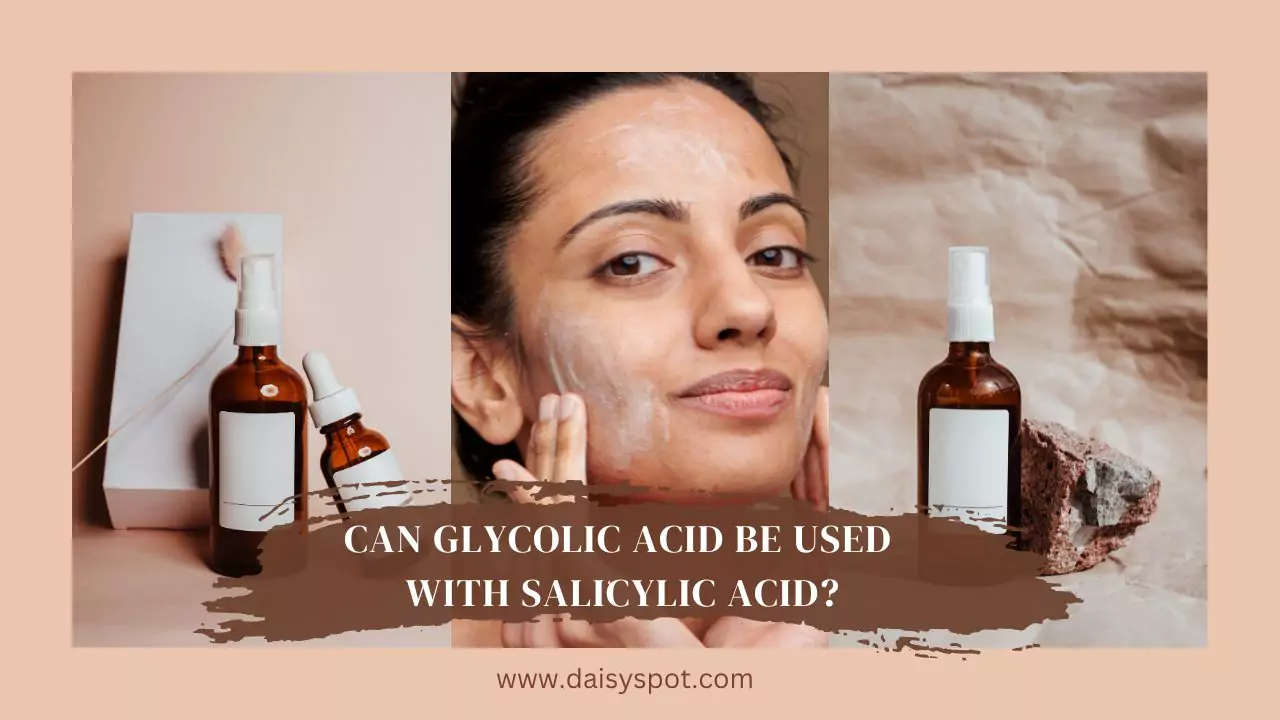Struggling with stubborn skin issues and searching for the perfect solution?
Say goodbye to skincare struggles because we’ve got the ultimate guide for you. Today, we’re diving deep into the burning question: Can glycolic acid be used with salicylic acid?
Get ready to witness the magic that this powerful combination can do for your skin! Whether it’s acne, clogged pores, or a desire for that flawless glow, we’ve got you covered.
This article will reveal everything you need to know about combining these two powerhouse ingredients. Also, you would love a quick glance at Glycolic Acid vs Salicylic Acid.
So grab your favorite face mask and let’s explore the world of acids like never before!
Introduction to Glycolic and Salicylic Acid
Glycolic and Salicylic acids are both powerful acids that can be used to improve the appearance of your skin. When used together, these two acids can provide even deeper exfoliation and help address a variety of skin concerns.
Glycolic acid can be used on its own or in conjunction with other acids such as Benzoyl Peroxide, Vitamin C, etc.
However, salicylic acid should only be used as directed by a healthcare professional.

Glycolic Acid vs Salicylic Acid
The table below outlines the characteristics, benefits, and recommended usage of Glycolic acid and Salicylic acid. It will help you choose the most suitable acid for your specific skin concerns and resolve your doubt that can glycolic acid be used with salicylic acid?
| Aspect | Glycolic acid | Salicylic acid | Using both together |
| Acid type | Alpha-Hydroxy Acid (AHA) | Beta-Hydroxy Acid (BHA) | Can be used together |
| Source | Derived from sugarcane | Derived from willow bark | Synthetic or plant-derived |
| Skin penetration | Penetrates skin surface | Penetrates oil-filled pores | Complementary penetration |
| Suitable skin types | Normal to dry | Normal to oily, acne-prone | Combination, oily, acne-prone |
| Benefits | – Smooths texture, improves skin tone – Reduces fine lines – Stimulates collagen production | – Reduces acne, blackheads, and whiteheads – Exfoliates inside pores and reduces excess oil- Anti-inflammatory properties | – Improved skin clarity and radiance – Smoother, softer skin |
| pH level | Lower pH (around 3.5-4) | Lower pH (around 3-4) | Low pH may increase the effectiveness |
| Frequency of use | 2-3 times per week | 2-3 times per week | Gradually increase usage |
| Skin concerns | – Potential irritation for sensitive skin- Increased sun sensitivity | – May cause dryness for some individuals- Less suitable during pregnancy or lactation | Consult a dermatologist for personalized recommendations |
| Morning vs. Evening application | Suitable for evening use | Suitable for morning use | Alternate usage for best results |
Can Glycolic Acid Be Used With Salicylic Acid?
Yes, glycolic acid can be used with salicylic acid. Combining these two acids can provide complementary exfoliating effects and improve skin texture. It can also help with issues like clogged pores and acne. However, it is crucial to understand the pros and cons of using both acids together.

Pros and Cons of Using Both Acids Together
When it comes to acids, more is not always better. Using too many different acids together can irritate the skin and cause breakouts. That’s why it’s important to understand the pros and cons of using glycolic acid with salicylic acid before you start mixing and matching products.
Pros of using Glycolic acid and Salicylic Acid together:
- Glycolic acid exfoliates the skin’s surface, while Salicylic acid unclogs pores, providing comprehensive exfoliation.
- Combinations lead to smoother and brighter skin.
- Allows other skincare products to work more effectively.
- It helps fade dark spots and even out skin tone.
Cons of using Glycolic acid and Salicylic Acid together:
- May cause redness, peeling, and irritation, especially for sensitive or dry skin.
- Increases the chance of compromised skin barrier and sensitivity.
- Heightens the risk of sunburn and sun damage and requires diligent sun protection.
- Not suitable for all skin types. Avoid individuals with eczema, rosacea, or inflammatory skin conditions.
- More active ingredients may lead to reduced efficacy or unexpected reactions.

How to Use Glycolic and Salicylic Acid Safely
First, diagnose your skin type, and then make an informed choice, Glycolic acid vs Salicylic acid based on your specific skin needs.
If you want to use both glycolic and salicylic acids, it’s important to do so safely.
Here are some tips:
- Start with a lower concentration of each acid. You can always increase the concentration if you find that your skin can tolerate it.
- Apply the acids to dry skin. This will help to avoid any irritation.
- Don’t leave the acids on your skin for too long. A couple of minutes should be enough.
- Rinse your skin thoroughly after applying the acids.
- Make sure you use sunscreen during the day if you’re using glycolic or salicylic acid, as they can make your skin more sensitive to sunlight.
Conclusion
We hope this article has given you a better understanding of your query: can glycolic acid be used with salicylic acid? When using both acids, it’s important to remember to start with the lowest concentration possible before gradually increasing as your skin adjusts.
Additionally, don’t forget to apply sunscreen daily to protect your skin from increased sensitivity. With consistent use, you’ll enjoy a smoother, more radiant complexion.
For any further assistance or questions, we’re here to support you on your skincare journey. Cheers to healthier, happier skin!
FAQs:
Will using both acids together irritate my skin?
No, using both glycolic and salicylic acids would not irritate your skin. These two acids can help calm and soothe irritated skin.
How often should I use both acids together?
You can use glycolic and salicylic acids together as often as you like. However, we recommend starting slowly and gradually increasing the frequency as your skin adjusts.
In what order should I apply the acids?
It doesn’t matter what order you apply the acids in. However, we recommend applying glycolic acid first and then following with salicylic acid.
Can I leave the acids on my skin overnight?
Yes, you can leave both glycolic and salicylic acids on your skin overnight if you wish. Just be sure to rinse it off in the morning.










